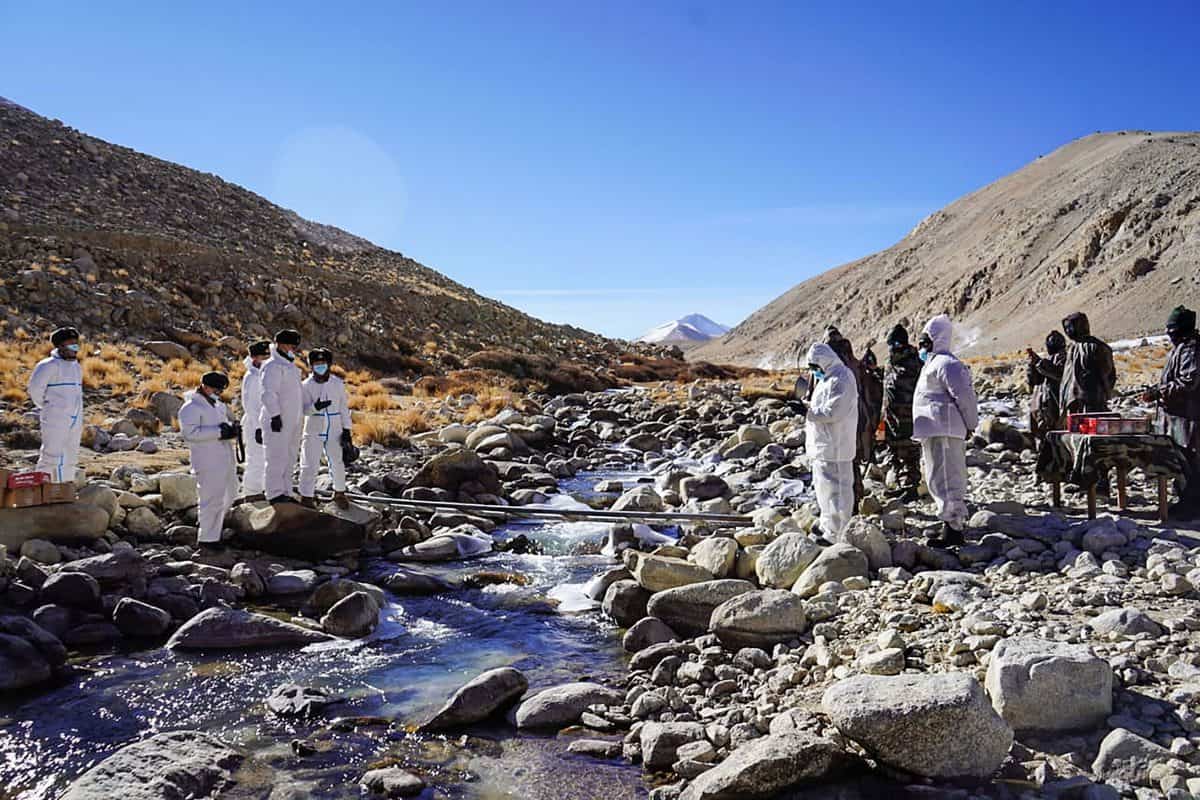
Given the situation at the Line of Actual Control in eastern Ladakh, where the standoff between Indian and Chinese armies is nearing for fourth-year, is of no comfort to India and it calls for new strategies to deal with it. The Indian military assessment of the situation as being stable doesn’t offer much solace to the nation, which is anxiously waiting for the standoff to end at the terms of India – China agreements of peace and tranquility that held until China tore them apart by its actions in April-May 2020. There is a need to change the narrative from stability to resolution of the standoff situation at the earliest and it must be done through diplomatic means in a mutually acceptable timeframe. the current situation cannot be allowed to drag on endlessly.
India may not be as large and economically powerful country as China, but that doesn’t and shouldn’t prevent the Indian army in devising fresh strategies to bring the situation back to pre-April 2020 times. this calls for new thinking and liberation from the thoughts that the larger and powerful China can dictate the decisions on the ground.
The Indian army chief Gen. Manoj Pande, while talking about the situation across the LAC, in a recent interview with India Today, stated that China is upgrading its infrastructure in terms of building up roads, airports, helipads to enable rapid movement and deployment of the troops. This is a fact, and even before China started the tense standoff, it was at a greater advantage than India in terms of infrastructure. Now it is going in for upgradation, and the answer to that is that India, too, is doing it now.
That, if decoded in realistic terms, is to maintain stability at the LAC. Another phrase that follows this concept of stability is “ we would have to be watchful,” which is a substitute for the word unpredictability. As such, it denotes that there is no guarantee of the situation staying where it is, and further it also implies that China will retreat to the pre-April 2020 position is uncertain. So the onus on maintaining the stability as of March 2023 lies with India. That incurs cost. The troops have been stationed at forbidding Himalayan heights for more than three years now, and during winters of 2020-2021, 2021-2022, and 2022-2023, the costs go up astronomically. This strains the economy and overstretches the military resources, though fortunately answer has been found in the advancement of technology and modernization where machines work for humans with precision.
What all it demands now is that India should look into future challenges and how these can be overcome. That is not an easy task. This requires extraordinary power of thinking and strategizing. Looking back at the approach of resolving the issues and achieving de-escalation and disengagement, there has been partial success. Some of the friction points continue to irritate the Indian military and diplomatic stalwarts. This is the first point to be achieved before looking at the complete reversal of the Chinese troops to the old positions.
As far as resolving issues through diplomacy is concerned, India should not lose sight of some of the diplomatic successes that China has achieved in recent days – it has brokered an unthinkable deal between Iran and Saudi Arabia. The two countries have agreed to resume their diplomatic ties. This is a major diplomatic victory for Beijing as it stands on the global diplomatic map as a power that can inject prospects of peace between Tehran and Riyadh. It has emboldened it a lot, and now when Chinese President Xi Jinping is visiting Russia on a three-day visit from March 20, it is becoming clearer that Beijing is seeking to replace the US in setting rules of world order.
India will have to take into consideration all these factors, the diplomatic dialogue would become tougher and Delhi can meet that with the new strategies. The policy makers will have to study the global situation afresh, and how India can influence global opinion. The stable situation narrative is not enough. There is a need to change the narrative or the other option is to start dialogue at the highest level between Delhi and Beijing, to b begin with.

